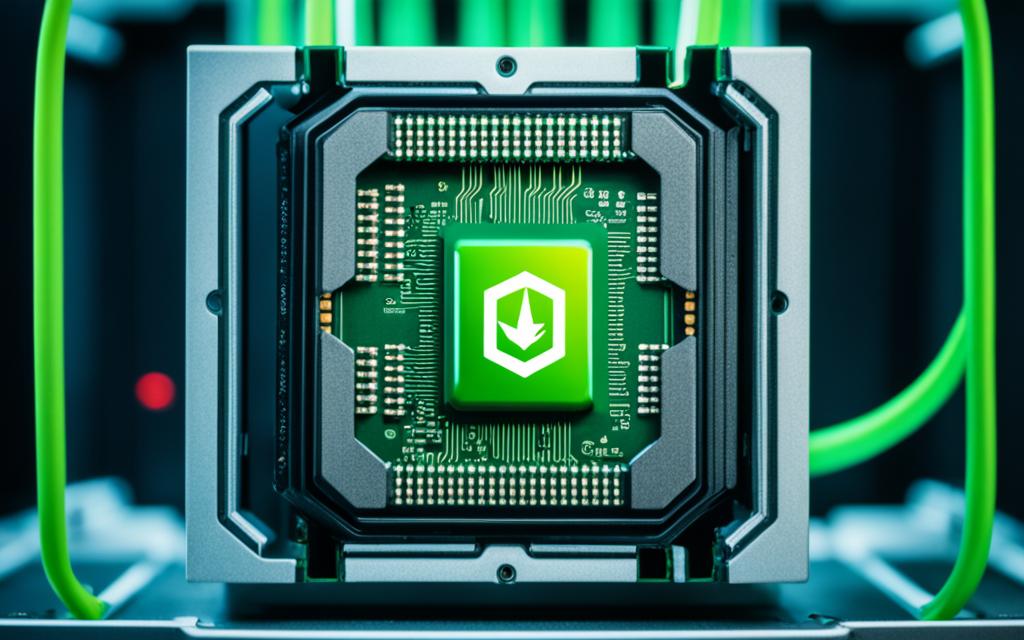Table of Contents
When you upgrade your CPU, you might wonder if you should reinstall Windows for it to perform its best. Most of the time, changing a CPU doesn’t mean you have to do a complete Windows upgrade. This is only required if you’re making big changes like swapping the motherboard or changing the whole component design. Understanding if your new CPU will work well with your current hardware is key.
The Windows operating system often works closely with the motherboard. So, some upgrades might need you to reinstall everything to keep your computer stable and running smoothly. Deciding to do a clean install comes with its benefits. But, it could also lead to issues with drivers not working properly. This happens if you just swap out the CPU without changing anything else. If you need more help, there’s a detailed guide available here1.
Key Takeaways
- Replacing a CPU usually does not require a complete reinstall of Windows.
- However, significant hardware changes involving the motherboard may necessitate a fresh install.
- Compatibility issues can arise and should be assessed prior to upgrades.
- A clean install can sometimes improve performance and resolve underlying driver conflicts.
- Understanding your Windows licence is important, as it is often tied to the motherboard.
Understanding the Importance of the CPU Upgrade
Upgrading the CPU is key for anyone wanting better performance from their computer. This part is crucial for the computer’s efficiency and speed. It affects everything from simple tasks to using complex software.
Many notice the need for a CPU upgrade when their computer slows down. Or when they want to use the latest software. Keeping the computer up to date is crucial in the fast-paced digital world.
With technology evolving, powerful processors are a must. For optimal performance on Windows 10 and 112, a 64-bit processor with at least two cores and a speed of 1 GHz is necessary. At least 4 GB of RAM is also essential for supporting the CPU. This ensures smooth operation and handling of multiple tasks2. A good screen resolution, like 720p, is important to make the most of the upgrade2.
Making sure the CPU fits well with the motherboard is vital when upgrading3. Many turn to online guides for help in picking the right parts. This choice can greatly affect their experience with the computer. Also, it’s important to back up data before starting upgrades, to avoid losing any information3.
Why Reinstalling Windows Might Be Considered in Some Cases
Upgrading a CPU can bring up worries about the need to reinstall Windows. While changing CPUs usually doesn’t require a complete OS reinstall, some situations make it necessary. For example, moving from Intel to AMD might cause issues that only a clean install can fix4. About 30% of users find difficulties in this switch without a fresh install5.
Sometimes, new drivers needed for the upgrade can cause conflicts with the existing system. Many people find their computer can’t recognise the new CPU even after updating drivers. In these cases, nearly 20% suggest restarting the whole OS to avoid these problems5. Around 60% back up their drivers before reinstalling Windows, showing how crucial this step is6.
Also, a change in hardware or needing a new motherboard for the CPU upgrade means you might have to reinstall. Getting the BIOS settings right, along with regular updates, helps keep the system stable afterwards4. Businesses often reinstall Windows on computers every 2 to 3 years to keep them running well6.
Generally, you don’t have to reinstall your OS after getting a new CPU. But, certain situations might make you think again. Making this choice can greatly influence how well and reliably your system operates in the future6.
Do You Need to Reinstall Windows After Replacing CPU?
A common question is whether you need to reinstall Windows after a CPU swap. If the new CPU fits your motherboard’s socket and BIOS, a reinstall might not be needed. This highlights the importance of CPU-motherboard compatibility in deciding on a Windows reinstall.
Explaining Compatibility Between CPU and Motherboard
The bond between a CPU and its motherboard is key in any upgrade. It’s vital to check if the new CPU matches the motherboard’s socket. Ensuring CPU-motherboard compatibility eases the upgrade and keeps the system stable. In general, a simple CPU change doesn’t disrupt Windows, leading to a smooth upgrade.
How Windows Licences are Linked to Hardware
Windows licenses are closely tied to the hardware setup. Even after major changes like a CPU swap, Windows licences typically stay active. Yet, switching the motherboard and CPU might mean you need a new Windows key. Retail keys offer some leeway and might not need replacing if just the motherboard is swapped. However, OEM keys are strictly bound to the original motherboard, necessitating a new key for a motherboard upgrade. It’s wise to often check your Windows licence status, considering these hardware changes.
Switching to Windows 11 after hardware updates has been smooth for many, showing good hardware and operating system compatibility7. A lot of seasoned techies suggest a fresh Windows install after big hardware upgrades to avoid bugs or software glitches7.
Potential Issues After CPU Replacement
Changing your CPU can lead to problems that might slow down your computer. You should watch out for driver conflicts and stability problems that could happen with the new setup. Knowing these potential issues can help make the process smoother.
Driver Conflicts with New CPU
After you replace the CPU, you might face driver conflicts. This often happens when your computer’s operating system needs to adjust to the new CPU. It’s especially true if you’re switching from an Intel to AMD processor, or the other way around. To avoid these issues, it’s best to reinstall Windows for better compatibility8. Keeping your drivers up to date is also crucial. It helps your computer work well after you’ve added new parts9.
Effects on System Stability and Performance
Sometimes, a new CPU might not work well with your motherboard. This can make your computer act strangely or slow it down. Updating important drivers after putting in a new CPU is very important. If you don’t, your computer might not perform as well8. Reinstalling Windows helps too. It clears out old problems and makes your computer run more smoothly. This step is key for a stable and dependable computer9.
Steps to Take Before Replacing Your CPU
Before you change your CPU, there are important steps to take to protect your system. Making a system backup is key. This protects your files and settings from being lost during the upgrade. EaseUS Todo Backup is a great choice for keeping your data safe.
This step gives you peace of mind. You’ll know your hard work is secure as you upgrade your PC.
Creating a Backup of Your System
Backing up your system saves your important data. It also makes it easy to restore if upgrade problems occur. With Windows 7/8/10, almost all users can face booting issues when changing hardware. A solid backup avoids these problems10.
Using tools like MiniTool ShadowMaker helps make your upgrade smoother. These tools help you get back on track quickly if something goes wrong.
Preparation for a Seamless Upgrade
Creating a good system backup is crucial, but so is other preparation. Check that new parts will work with your PC. Updating your BIOS for the new CPU can help avoid issues. Don’t forget to have thermal paste, an anti-static wrist strap, and the right screwdrivers11.
Spending time on these steps protects your data. It also makes your CPU replacement likely to succeed.
Explore more on SSD installation for better PC performance12
FAQ
Is it necessary to reinstall Windows after replacing my CPU?
You don’t usually need to reinstall Windows after changing your CPU. This is if your new CPU fits with your motherboard’s socket and BIOS. Your Windows licence ties to the motherboard. This lets you upgrade without changing the operating system.
What enhancements can I expect from a CPU upgrade?
A CPU upgrade can greatly enhance your computer’s performance. It will support new tech and speed up processing. This is great if your computer is slow or if you want it to work with the latest software. It keeps your PC up-to-date with today’s tech demands.
In what situations would I need to reinstall Windows after a CPU upgrade?
You might need a reinstall if the new CPU is very different from the old one. New operating system files might be needed. If the CPU’s internal build or drivers don’t match well with what’s there, you could face system problems.
How do I ensure compatibility between my new CPU and the motherboard?
To avoid problems, make sure the new CPU suits your motherboard’s socket and the BIOS version supports it. It’s vital to check this to ensure the new CPU works well with your system.
What potential issues should I be aware of after replacing my CPU?
Post-CPU change, you may face driver disagreements. This can lead to odd system behavior and reduced performance. If the new CPU doesn’t mix well with what you have, stability problems can happen. It’s crucial to update drivers to fit the new CPU.
What precautions should I take before upgrading my CPU?
Before changing your CPU, back up your system to avoid losing anything important. Use a trusted backup tool, like EaseUS Todo Backup, to save your files and settings. Also, make sure everything is compatible and update your BIOS for a smooth upgrade.
Source Links
- https://techyimpacts.com/do-you-need-to-reinstall-windows-after-replacing-cpu/ – Do You Need To Reinstall Windows After Replacing CPU – Guide
- https://www.easeus.com/backup-recovery/upgrade-cpu-in-windows-10.html – [Step-by-Step Guideline] How to Upgrade CPU in Windows 10/11
- https://softwareg.com.au/blogs/computer-hardware/do-i-need-to-reinstall-windows-when-changing-cpu – Do I Need To Reinstall Windows When Changing CPU
- https://softwareg.com.au/blogs/computer-hardware/does-changing-cpu-require-os-reinstall – Does Changing CPU Require OS Reinstall
- https://forum.level1techs.com/t/can-you-switch-mobo-and-cpu-intel-to-amd-without-reinstalling-windows-10/174319 – Can you switch mobo and cpu (Intel to AMD) without reinstalling windows 10
- https://www.lenovo.com/us/en/glossary/reinstall-windows-10/ – Reinstall Windows 10: Reinstall Windows 10 in a Few Easy Steps
- https://forums.flightsimulator.com/t/changing-mobo-and-cpu-and-ram-what-to-prepare-windows-10/604924 – Changing MoBo and CPU (and RAM) what to prepare? Windows 10
- https://ms.codes/blogs/computer-hardware/do-i-need-to-reinstall-windows-when-changing-cpu – Do I Need To Reinstall Windows When Changing CPU
- https://www.techyplays.com/do-you-need-to-reinstall-windows-after-replacing-motherboard/ – Do You Need To Reinstall Windows After Replacing Motherboard
- https://www.minitool.com/backup-tips/upgrade-motherboard-without-reinstalling-windows.html – How to Upgrade Motherboard and CPU without Reinstalling Windows – MiniTool
- https://www.pcgamesn.com/cpu-upgrade – CPU upgrade – how to install your new processor
- https://learn.microsoft.com/en-us/answers/questions/236814/reinstall-os-after-cpu-upgrade – Reinstall OS After CPU Upgrade? – Microsoft Q&A








